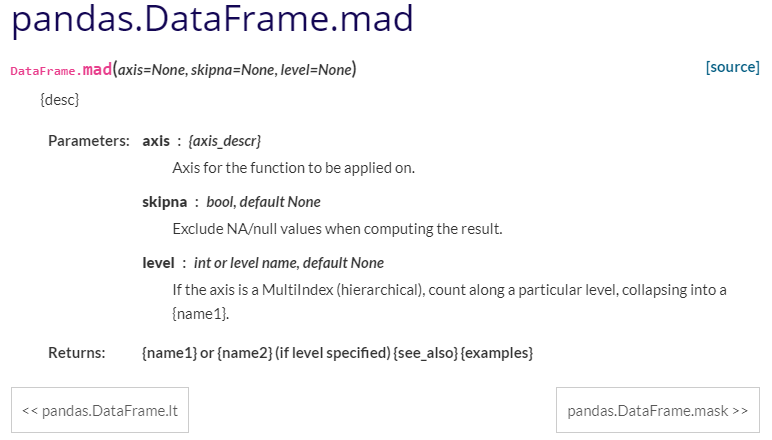-
-
Notifications
You must be signed in to change notification settings - Fork 18.4k
Documentation showing placeholders instead of text #39115
New issue
Have a question about this project? Sign up for a free GitHub account to open an issue and contact its maintainers and the community.
By clicking “Sign up for GitHub”, you agree to our terms of service and privacy statement. We’ll occasionally send you account related emails.
Already on GitHub? Sign in to your account
Comments
|
Thanks @MicaelJarniac for the report. docs rendered correctly in 1.1.5 |
|
Lines 10491 to 10510 in 2aadaa8
I believe this could be related. I'm just poking inside to see if I can find something, but I have |
|
While poking inside, I think I found some other places where this is happening: Lines 9529 to 9555 in 2aadaa8
|
|
The documentation for pandas.DataFrame.shift also seems to use the same kind of placeholders, but it renders correctly. Lines 9133 to 9236 in 2aadaa8
It has a decorator, and I believe that might be what's missing on the other ones. Line 9133 in 2aadaa8
|
|
take |
|
I've managed to find the source of this issue and am now testing my fix. Because of it not having a By adding an empty There's a catch, though, and that's where my workaround comes in: simply adding an empty I've added a check on this parsing step, that first ensures that By doing that, the empty |

Location of the documentation
pandas.DataFrame.mad
Documentation problem
The documentation is showing placeholders instead of the actual text.

{desc},{axis_descr},{name1},{name2},{see_also},{examples}pandas/pandas/core/generic.py
Lines 10890 to 10901 in 3e89b4c
The text was updated successfully, but these errors were encountered: